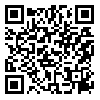Volume 14 - Special Issue, Vol.14,
irje 2019, 14 - Special Issue, Vol.14,: 60-71 |
Back to browse issues page
Download citation:
BibTeX | RIS | EndNote | Medlars | ProCite | Reference Manager | RefWorks
Send citation to:



BibTeX | RIS | EndNote | Medlars | ProCite | Reference Manager | RefWorks
Send citation to:
Ehsani Chimeh E, Ghadakchi A, Yazdi Feyzabadi V, Sadrossadat S, Mahi A, Mehrolhassani M et al . Investigating Availability and Distribution Trend of Human Resources Affiliated to the Ministry of Health and Medical Education in Iran from 2009 to 2015. irje 2019; 14 :60-71
URL: http://irje.tums.ac.ir/article-1-6145-en.html
URL: http://irje.tums.ac.ir/article-1-6145-en.html
E Ehsani Chimeh1 
 , A Ghadakchi2
, A Ghadakchi2 
 , V Yazdi Feyzabadi3
, V Yazdi Feyzabadi3 
 , S Sadrossadat4
, S Sadrossadat4 
 , A Mahi5
, A Mahi5 
 , MH Mehrolhassani6
, MH Mehrolhassani6 
 , M Iranmanesh *
, M Iranmanesh * 
 7
7

 , A Ghadakchi2
, A Ghadakchi2 
 , V Yazdi Feyzabadi3
, V Yazdi Feyzabadi3 
 , S Sadrossadat4
, S Sadrossadat4 
 , A Mahi5
, A Mahi5 
 , MH Mehrolhassani6
, MH Mehrolhassani6 
 , M Iranmanesh *
, M Iranmanesh * 
 7
7
1- Assistant Professor in Health Services Management, National Institute of Health Research, Tehran University of Medical Sciences, Tehran, Iran
2- MSc in Health Information Technology, Human Resource Management, Directorate General for Human Resources Development, Ministry of Health and Medical Education, Tehran, Iran
3- PhD in Health Policy, Social Determinants of Health Research Center, Institute for Futures Studies in Health, Kerman University of Medical Sciences, Kerman, Iran
4- Deputy for Management and Resource Development, Tehran, Iran
5- Human Resource Management, Directorate General for Human Resources Development, Ministry of Health and Medical Education, Tehran, Iran
6- Associate Professor in Health Services Management, Medical Informatics Research Center, Institute for Futures Studies in Health, Kerman University of Medical Sciences, Kerman, Iran
7- MSc in Health Management, Health Services Management Research Center, Institute for Futures Studies in Health, Kerman University of Medical Sciences, Kerman, Iran ,mahlairanmanesh1991@gmail.com
2- MSc in Health Information Technology, Human Resource Management, Directorate General for Human Resources Development, Ministry of Health and Medical Education, Tehran, Iran
3- PhD in Health Policy, Social Determinants of Health Research Center, Institute for Futures Studies in Health, Kerman University of Medical Sciences, Kerman, Iran
4- Deputy for Management and Resource Development, Tehran, Iran
5- Human Resource Management, Directorate General for Human Resources Development, Ministry of Health and Medical Education, Tehran, Iran
6- Associate Professor in Health Services Management, Medical Informatics Research Center, Institute for Futures Studies in Health, Kerman University of Medical Sciences, Kerman, Iran
7- MSc in Health Management, Health Services Management Research Center, Institute for Futures Studies in Health, Kerman University of Medical Sciences, Kerman, Iran ,
Abstract: (4908 Views)
Background and Objectives: Quantitative and qualitative improvement of human resources inequality have a significant effect on achievement to health system goals. The purpose of this study was to investigate the trend of geographic, supply, and gender distribution inequality of human resources of the Ministry of Health and Medical Education (MOHME) in Iran.
Methods: In this descriptive study, the trend of human resources of the Ministry of Health during the years 2009-2015 was investigated based on gender, level of education, and type of employment. In order to study the inequality, Lorenz curve and Gini coefficient index were used. Data were collected from the Human Resources Office of the Deputy of Management Development and Resources of the MOHME and analyzed by Excel 2013 and Stata-14 software.
Results: In the present study, women had the highest portion with a growth rate of 6.66% in 2015 and a Gini coefficient of 0.29 except in 2011. The highest and lowest growth rate compared to the base year in 2010 was related to specialist doctors (83.12) and general practitioners (-19.61), respectively. The lowest and highest Gini coefficient was related to the associate degree (0.26) and subspecialty (0.45), respectively.
Conclusion: The present study was the first study to investigate the trend of changes in the human resources characteristics of the MOHME at a national level. Since this study only considered the quantity of the trend of human resources changes, it is recommended that the quality of human resources be investigated in the future studies.
Methods: In this descriptive study, the trend of human resources of the Ministry of Health during the years 2009-2015 was investigated based on gender, level of education, and type of employment. In order to study the inequality, Lorenz curve and Gini coefficient index were used. Data were collected from the Human Resources Office of the Deputy of Management Development and Resources of the MOHME and analyzed by Excel 2013 and Stata-14 software.
Results: In the present study, women had the highest portion with a growth rate of 6.66% in 2015 and a Gini coefficient of 0.29 except in 2011. The highest and lowest growth rate compared to the base year in 2010 was related to specialist doctors (83.12) and general practitioners (-19.61), respectively. The lowest and highest Gini coefficient was related to the associate degree (0.26) and subspecialty (0.45), respectively.
Conclusion: The present study was the first study to investigate the trend of changes in the human resources characteristics of the MOHME at a national level. Since this study only considered the quantity of the trend of human resources changes, it is recommended that the quality of human resources be investigated in the future studies.
Keywords: Human resources, Gini coefficient, Lorenz curve, Average annual growth rate, Ministry of health and medical education (MOHME)
Type of Study: Research |
Subject:
Epidemiology
Received: 2019/01/20 | Accepted: 2019/01/20 | Published: 2019/01/20
Received: 2019/01/20 | Accepted: 2019/01/20 | Published: 2019/01/20
Send email to the article author
| Rights and permissions | |
 |
This work is licensed under a Creative Commons Attribution-NonCommercial 4.0 International License. |



